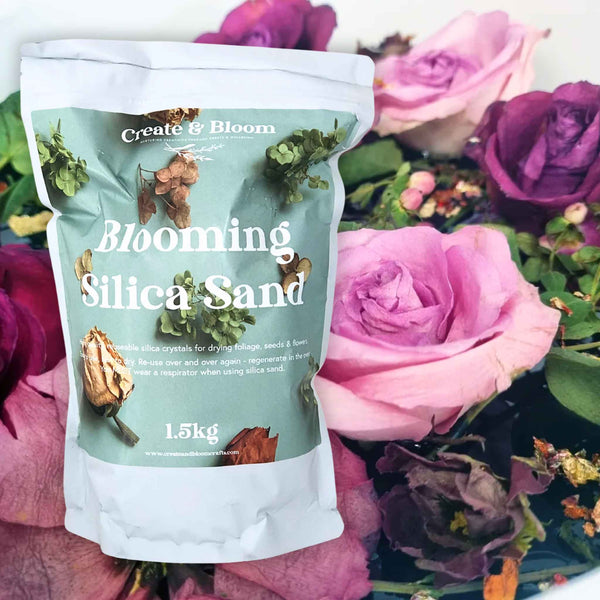
Tax included
In stock

Flower Preservation Silica Sand
Preserve a moment in time with your next Apex Resin pour.
Drying flowers in silica is a meticulous and artful process that preserves the delicate beauty of blooms. Use Blooming silica crystals gently to cradle precious petals, blooms and foliage, coaxing them into a graceful nap prior to their next chapter whether it is to add them to precious UV resin jewellery creations or elegant and sophisticated floral river tables.
As you carefully lay your flowers to rest within the blooming silica crystals, the tiny granules begin their work absorbing the moisture from your precious petals. The process is short, and you can reveal your flowers with an excited sense of anticipation, as the vibrant hues of your paper like flowers are revealed.
Once the flowers emerge from their silica snooze, they will bear the ethereal quality of dried blooms, they will be delicate but transformed into a subtle and lasting keepsake.
Continue to preserve the memories of your flowers by embedding them into your Apex resin within a 12 week time frame.
Remember, your Blooming silica can be re-used, over and over by simply heating it in the oven after each use. Simply re-generate between each use by heating in an oven (between 100 degrees C and 120 degrees C) for 2 hours (in a non-food use tray).
Directions:
-
Completely cover fresh flowers in silica sand
-
Ensure the container is airtight and covered
-
Leave for 3-10 days. The length of drying time will vary depending on how moisture rich your flowers are.
-
The process can be sped up by using a microwave on high for 1 minute, and leaving to cool for an hour, although we would still recommend leaving the flowers for at least a week before embedding them in resin.
-
Use a soft bristled brush to remove stubborn silica sand from dried flowers.
Safety Information:
Many building products including concrete, tiles, cement products and clay bricks contain silica, as does sand, rocks and granite. Silica dust is usually created when these building products are cut, drilled or otherwise worked on to release fine particles. This form of silica ‘dust’ can be considered harmful to the lungs with prolonged use (in large quantities, over many years). We advise you to wear a mask when using silica and to avoid pouring large amounts in one go.
Additional Information:
-
Some flowers will alter in colour when dried in silica - please keep a journal of which ones do
-
There have been known to be some flowers that just struggle to dry successful in silica - these include Agapanthus, Lisianthus and Gerbra
For tuition and extra tips for working with blooming silica successfully, please head to our ‘classes’ offerings where you can book the Dried Flowers Beginner Masterclass course. Ideal if you want to dry your flowers for the first time alongside Lou’s tutorials from Create and Bloom Crafts.









